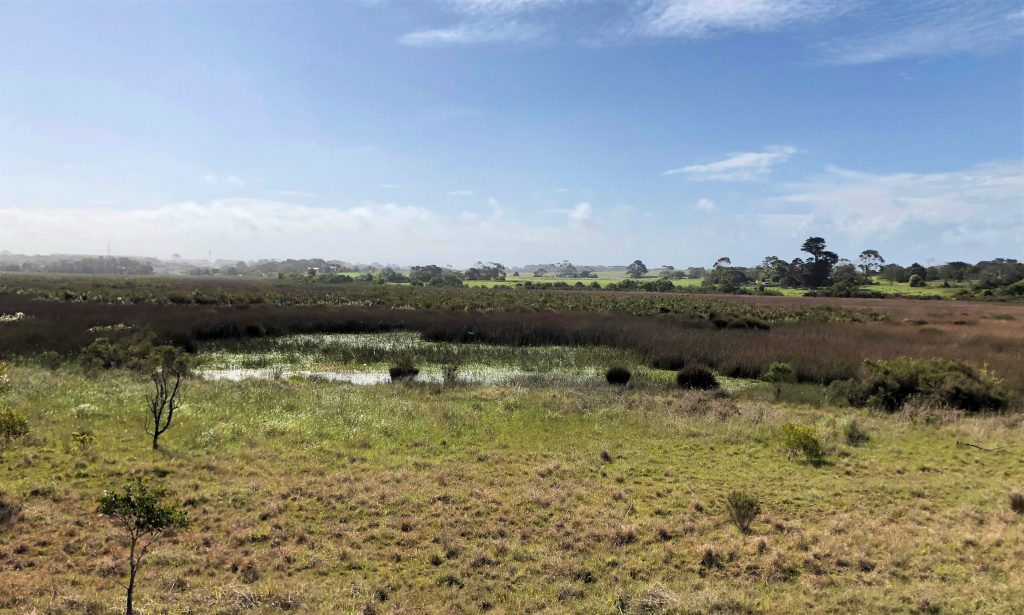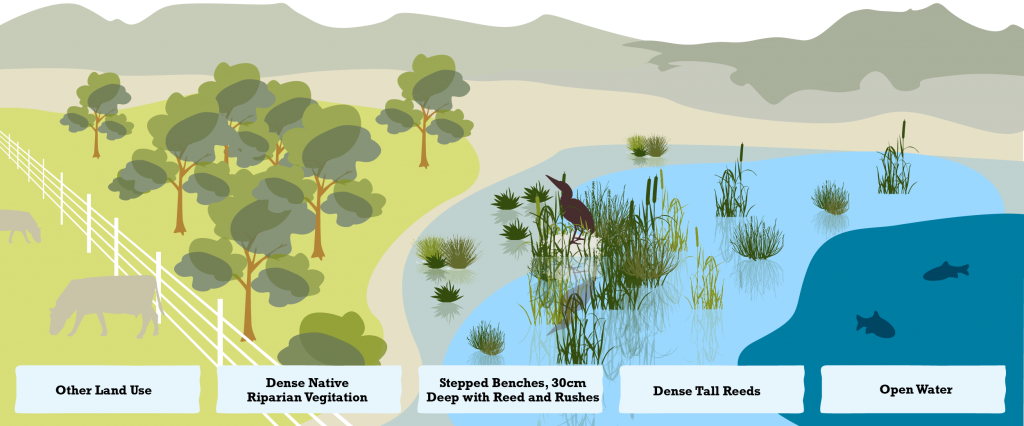The call of the bittern: can you help this iconic species?
‘Whoop-Boom!’ Over the past several weeks NGT has been helping with the Glenelg Hopkins CMA’s Bittern Recovery Project, by undertaking listening surveys across several wetlands in south-west Victoria. ‘Whoop-Boom’ is the sound we have been eagerly listening for – the call of the male Australasian Bittern (Botaurus poiciloptilus) as it holds it territory during breeding months in dense fringing wetland vegetation, in attempt to call in a mate. Please listen here to familiarise yourself with the call below.
While quite a distinctive sound on its own, amongst the buzz of swarming mozzies, chorusing frogs, blustering winds, and sometimes even passing traffic, picking up the call is not the easiest of jobs!
By the end of the survey program, the GHCMA is hoping to have a better understanding of the distribution and territories of male bitterns across the landscape. The Australasian Bittern is listed as endangered both in Victoria and nationally under the EPBC Act (1999), suffering a decline in abundance predominantly due to the loss and modification of freshwater wetlands across its range.

Support is still available through the Bittern Recovery Project for landholders within the Glenelg Hopkins CMA area to help protect bittern habitat. This may include fencing of wetlands or sections of reedbeds, pest plant and animal control, and the restoration of wetlands through the regulation of artificial drains.
Expression of interests are open until the 31st November 2020. The GHCMA are also supporting landowners to monitor wetlands and help in locating bitterns by supplying audio recorders!
For more information you can contact Jacinta Hendriks at the GHCMA by mobile on 0408 793 326 or by email. You can also visit the Bittern Recovery Webpage, and read about an example of landholders joining this project in Lachie’s previous NGT post.
The Bittern Recovery Project is supported by Glenelg Hopkins CMA and Nature Glenelg Trust, through funding from the Australian Government’s National Landcare Program.

